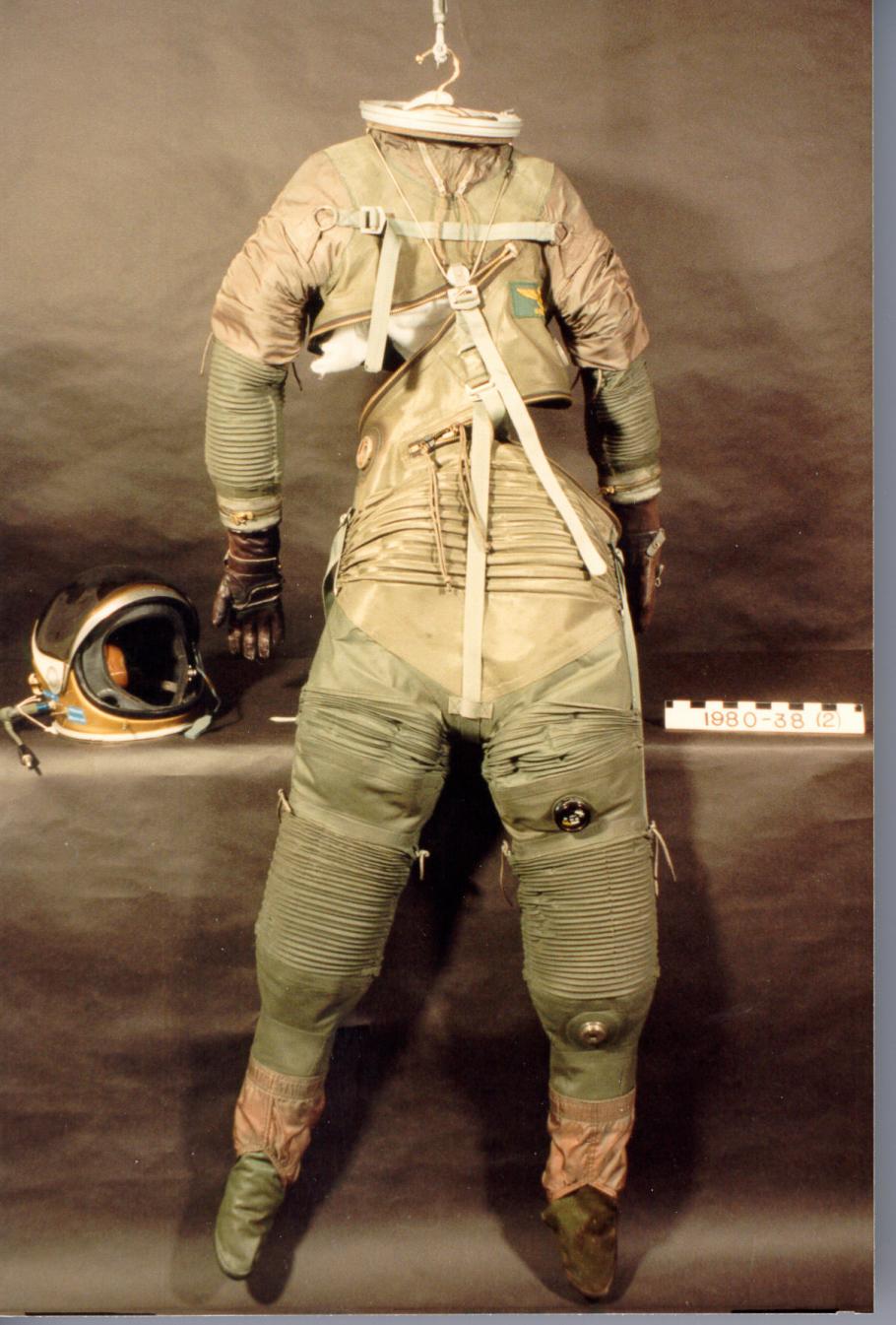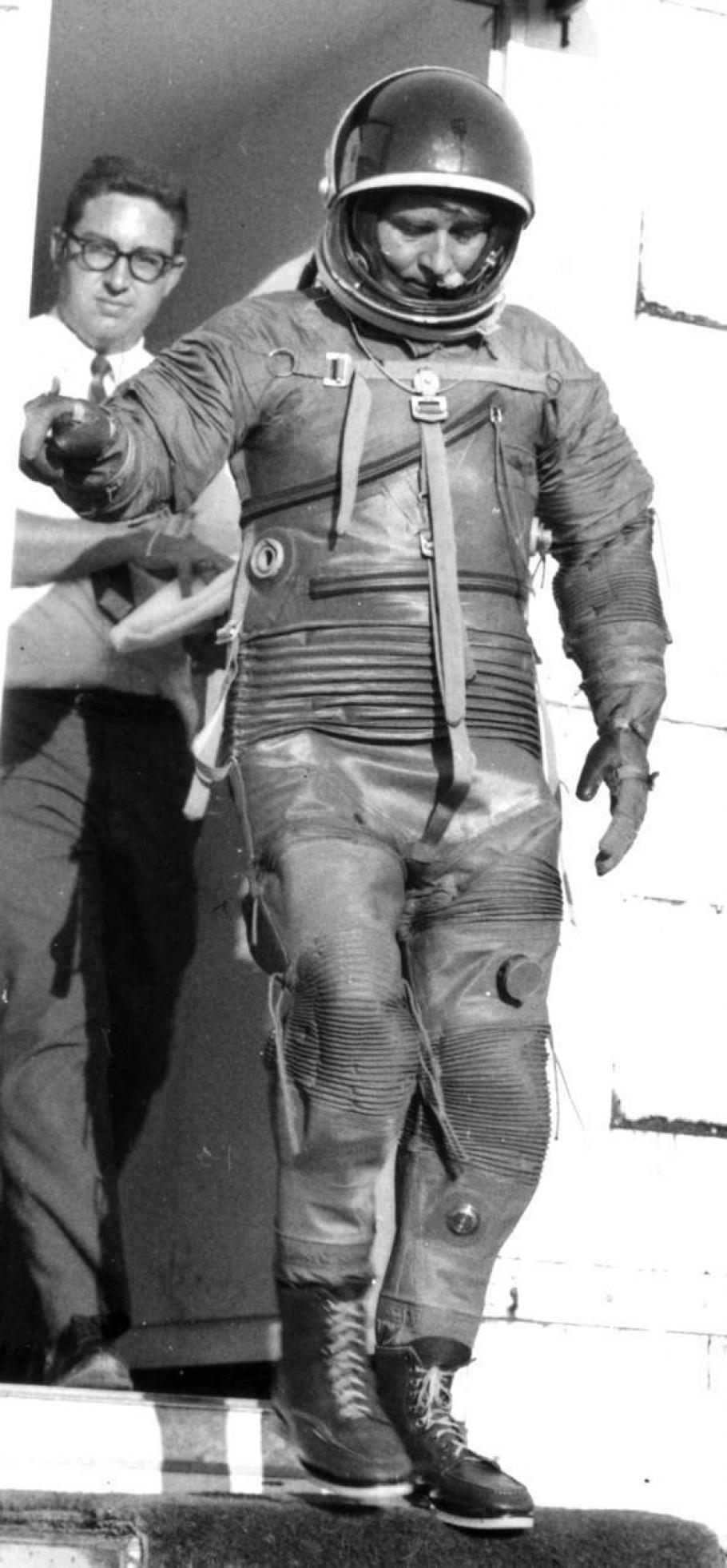Sixty-two suits. Toni Thomas and I came up with that number after several days counting spacesuits and flight suits on stepladders in the Environmental Storage Room, Building 24 (ESRB24) at the Paul E. Garber Facility. These were the pressure suits in the National Air and Space Museum spacesuit collection that still needed soft, conservation-correct storage mannequins. That was June 2009. Amanda Young had just retired after the successful publication of her and Mark Avino’s book Spacesuits: The Smithsonian National Air and Space Museum Collection. The book culminated fifteen years of hard labor on her part to document, reorganize and standardize the preservation, storage and exhibit conditions for the Museum's spacesuit collection. It had grown out of Amanda’s work along with Lisa Young to study and preserve first the Apollo suits, and then the Gemini spacesuits through grants received from Save America’s Treasures, Hamilton Sundstrand and the Smithsonian Women’s Committee. What Amanda had left behind were the suits that either were not part of those collections, or had not come back from loan in time for formal treatment and preservation. My task as new curator of the collection was to inspect these suits, verify information that could be found on them from the accession records and insert soft, conservation correct supports inside them to prevent further damage. When I took over the spacesuit collection, I found that my predecessor’s work was a dual edged sword. She had managed a remarkable percentage of the collection to a very high standard. Dates of acquisition at the National Air and Space Museum, delivery to NASA and construction at the contractor were entered into the collections database system. Mark Avino had taken studio photographs of each of these objects. Ron Cunningham of the Smithsonian Museum Conservation Institute and Mark had put together x-ray images of some of the suits in the collection. It was left to me to bring these remaining suits to this level of documentation. Given the amount of time that I had to devote to the collection, the prospect of completing this job seemed to be one instance of guaranteed lifetime employment. However, there was also looming talk of the move to a new storage facility at the Steven F. Udvar-Hazy Center. My original goal was to make sure that every suit had an internal support and aclear identity and accession number before it moved into storage at the Udvar-Hazy Center.
In principle, this was a good way to get to learn the collection. I planned to devote one day per week on the collection. There were several suits that were returning to the Paul E. Garber Restoration Facility from loan and more objects in the collection that were slated to head out to other museums on loan. Taking into account that activity and holidays, leave and travel, I anticipated that I would average completing fewer than one suit mannequin per week under the best possible scenario. My assumptions were based on the full cooperation of the Collections Processing Division, who would not only have to move suits from the ESRB24 to secure storage in another building, but would also have to supervise my work in a secure artifact storage area. To my delight, I received the full support of Liz Garcia, chief of the Collections Division, and her staff to work on my project. Lars McLamore authorized Carl Bobrow to oversee my work and arrange for all object movement. Samantha Snell was awarded a Collections Care and Preservation Grant to do condition assessment surveys on a large portion of our small objects. Subsequently, Carl was able to hire a contract photographer who could take pictures as Samantha’s contractors completed their work. To make matters even better, chief conservator Malcolm Collum hired Lisa Young last fall. Now I had access to all her knowledge that she had gained working on the Apollo and Gemini suits with Mandy Young. And Carl even found a wonderful volunteer for me, Dr. Robert Chambers, a retired pathologist, who was interested in sharing the work on making the mannequins. We are now down to four suits. The next steps will be to match all those extraneous suit components that are not attached, determine precisely where they belong, and plot out a storage arrangement for the suits.


